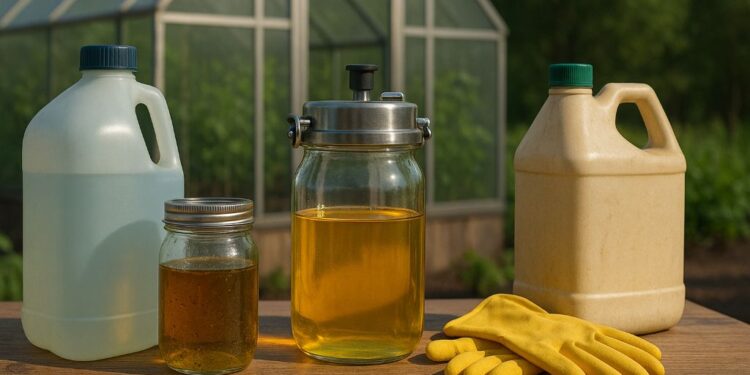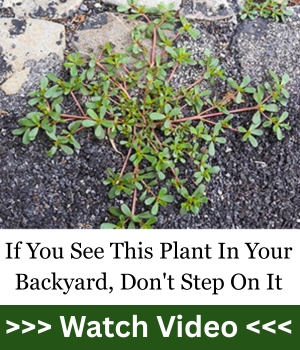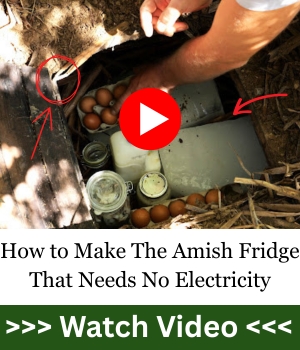Let’s cut the bull: fuel is control. The powers that be love when you’re shackled to the pump, playing their game, paying their prices, and begging for their approval every time you want to travel, plow, or power up. But what if you could sidestep the entire rigged system? What if you could make your own fuel—from kitchen scraps, forgotten fryer oil, or even the plants in your backyard?
It’s not science fiction. It’s biodiesel, and it’s real, it’s DIY, and it’s one hell of a middle finger to Big Energy.
Think about it—while they’re busy pushing electric everything and tracking your mileage through “smart cars,” you’re quietly producing your own off-grid power. Not just energy, but uncensored, uncontrolled, untraceable energy. They can’t tax what they can’t see. They can’t shut down what you never plugged into their system in the first place.
Biodiesel isn’t some prepper fantasy or hippie dream. It’s a working-class weapon in the war for independence. It’s how you stop being a pawn and start becoming a player in your own survival story.
Why Make Biodiesel Fuel at Home?
Because depending on corrupt, centralized systems is a recipe for disaster. The moment supply lines are cut or the government tightens the leash, you’re screwed—unless you’re already self-reliant.
Here’s what making biodiesel fuel at home gives you:
- Independence from gas stations and their price gouging.
- Control over your fuel supply.
- Utility—power generators, farm equipment, even vehicles with the right engine mods.
- Resilience when SHTF and the world goes dark.
Let’s not forget the psychological advantage. When others panic during a blackout or a diesel shortage, you’ve got peace of mind—and a full tank. That kind of mental edge? It’s priceless. You don’t just survive… you thrive. Because you had the foresight to unhook yourself from the Matrix.
And the kicker? You’re sticking it to the same elite machine that wants you broke, cold, and obedient. Making biodiesel at home is the prepper’s power move. Not just for today—but for whatever hell tomorrow brings.
Advantages of Making Biodiesel Fuel at Home
- Freedom – No more pump dependency.
- Reuse – Turn waste into power.
- SHTF-Ready – Fuel when others are panicking.
- Environmental bonus – If that matters to you, biodiesel burns cleaner.
There’s also cost savings. Sure, initial setup takes some cash. But after that? You’re looking at pennies per gallon. When diesel hits $8 a gallon (again), you’ll be laughing while running your off-grid homestead for next to nothing.
Related: How to Drain a Fuel Tank: A Step-by-Step Guide for Preppers
And don’t overlook the barter potential. In a grid-down world, fuel = power. You become more than self-sufficient—you become a provider. That’s how you build alliances. That’s how you become indispensable.
But First… A Warning
Let’s be clear: making biodiesel at home isn’t a joke. You’re dealing with chemicals that can blind you, blow up your garage, or turn your skin into soup if you screw up. If you’re the kind of person who forgets to put the cap back on the bleach, this might not be your path.
You’ll be working with methanol (highly flammable) and lye (extremely caustic)—both can kill you if you don’t respect them. No shortcuts. No YouTube hack nonsense. Do it right or don’t do it at all.
If you’re not wearing gloves, goggles, and protective clothing while processing, you’re not being a badass—you’re being a moron. The fumes alone can mess you up if you’re working in a closed garage or near an open flame. Remember: this is chemistry, not campfire cooking.
The good news? Once you master the process, you’re golden. But the bad news is: trial and error with biodiesel can cost fingers, lungs, or worse. Read everything you can, plan your setup, and treat this process like the serious operation it is.
How to Make Biodiesel Fuel from Vegetable Oil
Let’s start with the basics. If you’ve got used vegetable oil (think fryer grease from restaurants or old oil from your kitchen), you’re already holding raw fuel.
You’ll need:
- Used vegetable oil
- Methanol (wood alcohol)
- Lye (sodium hydroxide or potassium hydroxide)
- Blender or processor
- Mixing containers (chemical-resistant)
- Safety gear (goggles, gloves, apron, ventilation)
Basic Steps:
- Filter the oil – Remove food particles and water. Heat it slightly (120–130°F) to drive off moisture.
- Mix the methoxide – Combine methanol and lye. Do this outside or in a well-ventilated area. This mixture is called methoxide, and it’s deadly. Handle with care.
- Combine methoxide and oil – Slowly add the methoxide to the oil while stirring. Keep it between 120–130°F.
- Let it settle – After several hours, glycerin will settle at the bottom. Drain it off. The top layer is your biodiesel.
- Wash and dry – Wash your biodiesel gently with water to remove impurities. Then let it dry.
Want it smoother? Use a hand pump, small-scale biodiesel processor, or even repurpose an old water heater. It all depends on your scale and creativity. The more you refine the setup, the cleaner your fuel and the more repeatable your process.
This method is one of the most tried-and-true prepper solutions out there. Restaurants dump hundreds of gallons of oil weekly. Imagine converting that waste into weeks—months—of off-grid power. It’s not just practical. It’s revolutionary.
For visual instructions for a larger scale operation, you can watch this video. It covers cooking oil turned into biodiesel, which we will highlight more in the next section.
How to Make Biodiesel Fuel from Cooking Oil
Same deal as above, but with used cooking oil—the gunky stuff from your deep fryer or pan. You’ll want to filter it like your life depends on it, because any water or food particles can ruin the batch or cause violent reactions.
Pro Tip: Restaurants often throw out gallons of used oil. Build a relationship with a local diner, and you might never need to buy oil again.
Even if you’re just cooking for your family, collect every ounce. Keep a sealed container under the sink, and never dump oil down the drain again. It’s not waste—it’s your backup generator fuel just waiting to be born.
Cooking oil is especially easy to source in urban or suburban areas. Even if you can’t grow your own fuel crops, you can still stay ahead of the collapse by scavenging what others throw away. Their waste. Your weapon.
How to Make Biodiesel Fuel from Plants
This one’s for the long-haulers. You can grow oil-producing plants like canola, sunflower, or soybeans, harvest the seeds, and extract the oil with a press.
From there, you follow the same chemical process.
This route gives you full-spectrum independence. Not only do you control the processing, you control the supply. You don’t have to rely on some greasy dumpster behind Applebee’s—you’re farming your future, literally.
Want to level up? Look into algae biofuel. Certain strains of algae produce more oil per acre than any terrestrial crop. It takes a bit more infrastructure, but if you’re planning for the long-term, that’s the prepper holy grail.
How to Make Biodiesel Fuel in a Greenhouse
Here’s where it gets sexy. You’ve got a greenhouse? Then you’ve got a controlled biodiesel lab—especially in winter.
- Keep temperatures stable for oil processing.
- Use passive solar heat to warm oil and speed up reactions.
- Grow oil-producing crops year-round (sunflowers, soy, algae? Yes please).
Most biodiesel reactions prefer warmth—too cold and the process grinds to a halt. A greenhouse provides not just the crops, but the right conditions for fuel production without firing up extra heaters.
Plus, imagine building a concealed fuel-processing setup tucked behind your tomatoes. Nobody’s going to suspect your quaint little greenhouse is also a fuel refinery, capable of keeping you mobile, lit, and alive after the collapse. Now that’s dual-purpose prepping.
The Real Threat: Control Disguised as Convenience
They don’t want you doing this. Not really. That’s why they make it hard to buy methanol. That’s why regulations choke off small-scale biodiesel operations. Because once enough of us break free, the system crumbles.
They’d rather you stay plugged in. Plugged into the grid. Plugged into the pump. Plugged into fear.
This isn’t just about fuel. It’s about control over movement, food production, heating, and ultimately your life. Every drop of biodiesel you make is a step out of the cage. A strike against dependency. A refusal to be tamed.
So what are you waiting for? Get the gear. Get the knowledge. Build your setup. Because the day is coming when homemade fuel won’t just be smart—it’ll be survival.
You may also like:
Amish Survival Hacks For a Long-Term Blackout (Video)
These Fuel Storage Mistakes Could Kill You























I’ve been making biodiesel from waste cooking oil for about a year now, and it’s been both challenging and rewarding. After collecting oil from a local restaurant (they were happy to give it away!), I set up a small processing station in my shed. The first batch was nerve-wracking – working with lye and methanol requires serious caution. But once I mastered the process, it became routine. My truck runs beautifully on it, and I’ve cut my fuel costs by more than half. During last winter’s power outage, I ran my generator on homemade biodiesel while neighbors struggled. For anyone interested in self-sufficiency, I’d recommend trying this alongside watching videos for entertainment during the processing wait times.